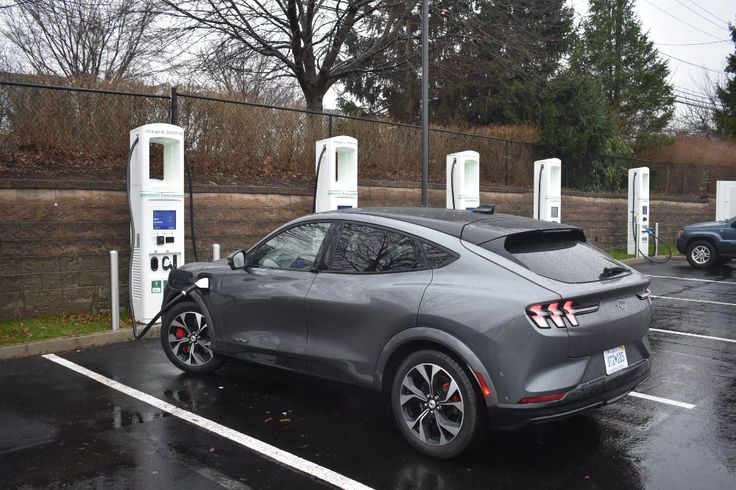Engine oil is an extremely important factor that helps your car operate more efficiently. So whether these types of oils work out in EV cars or not? Or to put it simply: Do electric cars need oil changes? This concern will be made clear in our article.
Contents
Do Electric Cars Need Oil Changes?

Traditional gasoline- and diesel engine require oil to lubricate many of the moving parts in the engine as well as the drivetrain. The pistons, valves, and other parts of the engine need to glide smoothly past each other at very high speeds, so oil is added to the engine to lubricate these close interactions.
Adding oil to the engine will prevent overheating. Over time, microscopic metal particles accumulate in the oil from all the contacts in the engine, so it is necessary to oil changes and supply new oil to keep the engine running better. If you do not change the oil, the engine will quickly wear out and decrease its lifespan of the car engine.
But in contrast, in an electric vehicle, none of the above happens. Different from vehicles that use internal combustion engines, electric cars operate by using batteries and electric motors. There are no engine pistons, valves, or moving parts that require lubrication, so oil changes are not necessary for electric vehicles.
EVs are an important goal of the auto industry, opening the way for a greener future. Electric vehicles do not need to use engine oil to lubricate moving parts like cars with internal combustion engines. So “Do electric vehicles need oil changes?”
Our answer is “Electric cars don’t need regular oil changes”. Instead, new fuel sources are researched to optimize the performance of electric vehicles and contribute to reducing the environmental pollution problem. However, if the vehicle is a hybrid petrol/electric vehicle and still has the same engine as a conventional vehicle, it will still need an oil change.
Only electric vehicles do not need to change the engine oil. Although there is no need for oil changes, electric vehicles still need to change other fluids such as coolant, brake fluid, and transmission oil.
>> Related post: Top 7 Signs You Need An Oil Change
Which Parts Do You Need To Lubricate On Electric Cars?
The powertrain of the most popular electric vehicle has eliminated up to 20 moving parts compared to an internal combustion engine vehicle. Therefore, maintenance will be less and simpler, but there are still important parts of electric vehicles that need to be lubed. Lubricants for electric vehicles are manufactured on the basis of research into the specific properties of electric motors in order to achieve higher performance.
Lubricants for electric vehicles have higher technical requirements than internal combustion engine oils. They are manufactured with the aim of ensuring the performance of vehicle specifications, improving anti-wear performance, reducing friction, increasing performance, electrical and insulating compatibility as well as cooling electric motor and battery system.

EV battery cooling system
For the operation of electric vehicles, battery temperature is a big problem, so lithium-ion batteries are the part that needs to be checked and add coolant periodically. Because electric cars, if not guaranteed for their cooling ability, can lead to a very dangerous fire and explosion situation. This is the most important category in electric car maintenance.
Like the coolant on gasoline and diesel cars, drivers need to regularly check and add battery coolant for electric cars to ensure the most stable and safe operation. Many electric cars have caught on fire, possibly as a result of owners letting the batteries overheat. So keeping the coolant at the standard level is the best method.
Lubricate electric motor
The electric motor not only helps the vehicle operate and roll, but also plays a role in energy regeneration. It can be understood simply, when using the brake, or decelerating, the intermediate gear set will generate electrical energy and recharge it back into the battery pack, thereby increasing the vehicle’s performance. Electric vehicle models can be equipped with one or more electric motors to form a drive system similar to cars using internal combustion engines such as FWD, RWD, AWD, etc.
Compared with gasoline engines with hundreds of components that must be regularly checked periodically, the electric motor has a much simpler structure. However, it is not for that reason that users are subjective in checking and maintaining electric motors. Some tasks to pay attention to when maintaining this part include: cleaning the engine; checking and lubricating bearings, and electrical conductors.
EV transmissions
Most of the gearboxes on electric cars today are single-speed gearboxes, with a much simpler structure than manual transmissions. And automatic transmissions of cars using internal combustion engines (some models of electric cars don’t even have a transmission). Due to such a simple structure and being lubricated with high-grade synthetic oil, the gearbox of electric cars is almost free of worrisome damage and has high durability. So this part does not require too much time and expense in maintaining electric cars.
The category that needs the most attention when maintaining electric car gearboxes is lubricating oil. Vehicle owners only need to pay attention to check, supplement and replace lubricating oil when necessary to ensure ideal performance and avoid damage to mechanical components.
Brake pads
Electric cars use regenerative braking with an electric motor reversing mechanism to slow the wheels down. So the brake pads won’t wear out as much as the brakes on petrol and diesel cars. Even so, brake pads are still an item that requires electric vehicle owners to periodically check and add brake fluid, with a lower frequency than cars with internal combustion engines.
When brake pads and discs are pressed together to stop, the hydraulic fluid is found in normal cars. The function of this fluid absorbs water from the air over time. If the oil is not flushed regularly, it can cause to corrode the brake system. Which means EVs still need regular fluid changes. Brake fluid needs to be replaced every two years on most major electric vehicles such as Tesla vehicles or change every 5 years for Nissan-branded vehicles.
Other parts: talking about the lubrication for electric cars, it is also necessary to pay attention to some other details that do not require high frequency such as the safety airbag system, brake fluid, cabin air filter, system lights, steering components, and suspension.
>> Read more: How To Choose Good Brake Pads For Your Car?
Sum Up
Do electric cars need oil changes? Electric vehicles absolutely do not require oil changes, oil changes, or regular maintenance. However, the internal parts of the car also have little need for replacement or repair because there are very few moving parts inside.
Different from cars using gasoline, internal combustion engine oil has many parts such as spark plugs, valves, fuel tanks, silencers, transmission belts, hoses, catalytic converters, etc., electric cars only use using a simple 1st gear transmission. Therefore, when comparing the cost of using and changing oil. It can be seen that using electric cars is more economical. If you are planning to buy an electric vehicle, the information in this article may be useful for you.



